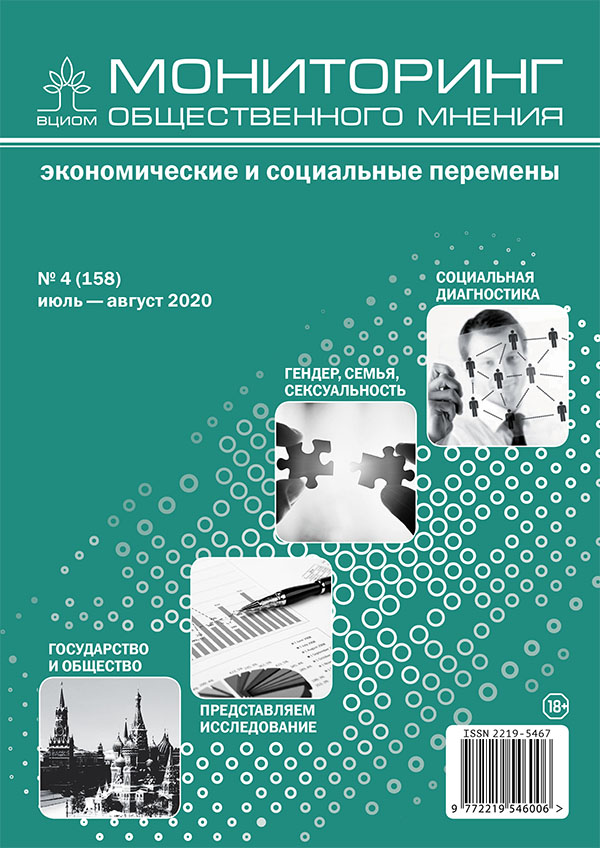Имплицитные факторы и несогласованность электорального поведения: от теоретической концепции к эмпирическому явлению
DOI:
https://doi.org/10.14515/monitoring.2020.4.1584Ключевые слова:
электоральное поведение, электоральные прогнозы, прогнозирование поведения, факторы поведения, согласованность отношения, ГАТО, электоральные опросыАннотация
Несколько последних выборов и референдумов ознаменовались драматическими провалами предвыборных прогнозов, основанных на массовых опросах избирателей. В ответ на недовольство общественности и политиков развиваются альтернативные подходы, такие как рынки прогнозирования, имплицитный тест отношения (IAT), прогнозы на основе ожиданий и т.д.. Индустрия избирательных опросов также не стоит на месте: было проведен ряд исследований, показавших, что несовершенства проектирования и реализации выборки выступили основной причиной относительно низкой точности прогнозов. В настоящей статье рассматривается другой фактор прогнозных ошибок — недостаточность данных о декларируемых намерениях для построения достоверного прогноза. Для этого автор вводит инструмент графического ассоциативного теста отношения (ГАТО), измеряющий имплицитные установки/намерения, и предлагает дополнить типичную модель теории обдуманных действий / теории запланированного поведения (ТОД/ТЗП) «потоком» имплицитных эффектов. Основные выводы исследования доказывают, что имплицитные факторы — реальный, надежно выявляемый феномен, а несогласованность эксплицитных и имплицитных установок/намерений характерна для многих избирателей.
Описание основных черт этого явления составляет суть настоящей статьи. В следующей статье (Имплицитные факторы и несогласованность электорального поведения: от установки к поведению // Мониторинг общественного мнения: экономические и социальные перемены. 2020. № 5) будут рассмотрены поведенческие эффекты несогласованности и результаты совместного использования как имплицитных, так и эксплицитных факторов в модели электорального прогнозирования.
Загрузки
Опубликован
Как цитировать
Выпуск
Раздел
Лицензия
Copyright (c) 2020 Мониторинг общественного мнения: экономические и социальные перемены

Это произведение доступно по лицензии Creative Commons «Attribution-NonCommercial-ShareAlike» («Атрибуция — Некоммерческое использование — На тех же условиях») 4.0 Всемирная.






